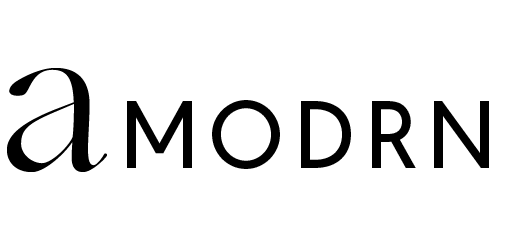Welcome to ‘We Asked The Experts’, where our professional know-alls answer the questions that have been puzzling you. Today on the segment, personal trainers, Greg Stark and Melanie Katz, break down the common conundrum: how much protein do I actually need to eat? … Got a question you want answered? Email [email protected].
“The Muscle Machine”. It was an item on the breakfast menu at a local café. Two poached eggs with bacon and the works atop a piece of—bread, you’re thinking—but no, steak. Yep, it was the expertly crafted breakfast of a body builder—protein on protein on protein.
While I didn’t order it (because, carbs), it got me thinking: when did it become normal to eat butchered cow for breakfast? (Outside of a sausage and egg McMuffin on a hungover Sunday, of course). And more importantly, is that what it takes to get a booty like Beyonce? Here I was squatting until the cows came home when I should’ve been watching Netflix, waiting for them … with the oven on.
While I wasn’t entirely wrong—because strength training is important—according to Melanie Katz, it takes more than exercise. “Lifting weights alone won’t help you build lean muscle mass. No matter how heavy your bar is, if you’re not fuelling your body properly, your efforts on the gym floor will go unrewarded.”
Why? You guessed it: protein.
“This is where protein comes into play. Proteins are made up of amino acids—the building blocks that form our muscles, tendons, ligaments, hormones, immune functions and even our brain matter,” she told us. “When we lift weights, we create tiny tears in our muscle fibres. Our body responds by creating new muscle fibres to repair them, in turn creating more lean muscle mass. This means if we’re trying to build muscle without consuming enough protein to get the amino acids we need for our bodies to repair, we won’t see the results we’ve been working so hard for.”
But seriously, how much protein do we need?
The recommended daily intake for healthy adults is 0.8g per kilogram of body weight. But according to Greg Stark, “this recommendation is only to prevent deficiency, it’s not your optimal intake.” If you’re active, trying to build muscle, or to slim down, Stark suggests eating, well, a bit more.
**MATH BREAK**
Cue up your calculator app.
Standard recommendation for errybody (almost): 0.8g per kilogram of body weight (0.8 x body weight = RDI)
Moderately active: 1.2-1.4g per kilogram of body weight (1.2 x body weight = RDI)
Extremely active: 1.6-1.8g per kilogram of body weight (1.6 x body weight = RDI)
So if you’re trying to build muscle or to get lean, opt for an RDI between 1.4 and 1.8, depending on your overall activity levels. Make sure you get this every day regardless of if you’re hitting the gym or having a rest.
And what’s the difference between active and rest days?
“For optimal results, protein should stay consistently around 1.4g – 1.8g/kg,” Stark told us. “On active days, protein consumption will help ensure you don’t waste muscle mass when trying to get lean and allow you to increase muscle mass if you’re looking to gain. On rest days, a high protein intake will also help you to stay satiated and keep blood sugar levels constant.”
In fact, the main difference between active and inactive days should be carbohydrate and overall calorie intake, not protein. “If you are looking to gain muscle mass, the key is to create a surplus of calories—around 500 calories above your basal metabolic rate (BMR), which is your break even point of calories.” Similarly, if you’re looking to lose, you should be aiming for a calorie deficit of around 500 calories.
**MATH BREAK**
For a client looking to put on muscle mass:
Protein Intake (g) = Body Weight (kg) x 1.8
Fat Intake (g) = Body Weight (kg) x 1.5
Rest Day Carbohydrate (g) = BMR – protein calories – fat calories + 500 calories
Active Day Carbohydrate (g) = (BMR x 1.5) – protein calories – fat calories + 500 calories
For instance, the daily intake of a 99kg male with a body fat percentage of 24.26% looking to increase muscle mass is…
Protein intake = 178g
Fat intake = 112g
Carbohydrate inactive = 184g
Carbohydrate active = 428g
Calorie Target (inactive days) = 2452 calories
Calorie Target (active days) = 3428 calories
“When putting on muscle mass, additional calories from protein is not a bad thing, as long as you are getting enough fibre in your diet and reaching your overall calorie target. Dwayne ‘The Rock’ Johnson is known to eat 5000 calories a day, 507g of protein across 7 meals a day.”
But protein isn’t just about building bulk. It also plays a crucial role in immune function, blood sugar control and weight loss. If your goal is to lose body fat, you need to take protein seriously. Why? Well, where do I start?
- Protein requires more energy to digest than carbs and fat so you burn more calories to process protein than you do the other two.
- Protein keeps you full for longer due to this lengthy digestion time
- Protein assists with muscle growth (as I’ve mentioned) and muscle burns a lot more calories in the body than fat so protein is key for weight loss
As you’re losing weight, your body burns both fat and muscle. Unlike carbohydrates and fat, protein can’t be stored. So if you want to achieve a leaner physique or build muscle, you need to top up your supply, every day.
Great, so what does this look like on a plate?
Now you’ve calculated your protein needs, you’re probably wondering how to meet them.
“It’s not only important to think about eating protein but where that protein may have come from. For instance, studies have shown that grass-fed meats contain more nutrients than grain fed, particularly Omega 3’s. Where possible look for locally grown and sustainably farmed sources of protein and limit your intake of highly processed meats like luncheon meats. Ideally, a mixture of plant and animal based proteins should be consumed,” says Stark.
Some great examples of protein (per 100g) include:
- Chicken 34g
- Salmon 39g
- Pork 27g
- Red Meat 27g
- Cottage Cheese 11g
- Tofu 8.1g
- Red Lentils 6.8g
- Kidney Beans 6.6g
- Eggs 6g
- Quinoa 4g
So if you are a 65kg female, doing resistance training 3 days a week you should be eating 78g of protein a day, so equivalent to 13 eggs or 6 cups of lentils or 2 salmon steaks. For example, you could have 3 eggs at breakfast, 150g of chicken at lunch and 150g of fish or meat for dinner. And if you follow a plant-based diet, don’t panic. You can easily meet your protein requirements. Check out this vegan ultra-marathon runner if you don’t believe me.
If this all seems too hard to calculate, Stark suggests starting with a palm-sized portion of protein at every main meal. Two palms if you’re male.
And is it possible to eat TOO much?
If a bit is good then a lot must be better, right? Not always. When you eat more protein than your body needs, it metabolizes as glucose. This means your body uses it the same way it would sugar—that is, it’s either excreted through your urine or stored in your fat cells. If you’re consuming too many kilojoules, the latter is likely to happen, leading to weight gain.
At the end of the day, we’re all different. Assessing the perfect protein intake for your body is a matter of trial and error. That being said, eating more protein alone won’t help you reach your goals, it’s important to eat the right amount for your activity levels to avoid unnecessary weight gain.




